Franco Matzkin
Towards Reliable WMH Segmentation under Domain Shift: An Application Study using Maximum Entropy Regularization to Improve Uncertainty Estimation
Jun 17, 2025Abstract:Accurate segmentation of white matter hyperintensities (WMH) is crucial for clinical decision-making, particularly in the context of multiple sclerosis. However, domain shifts, such as variations in MRI machine types or acquisition parameters, pose significant challenges to model calibration and uncertainty estimation. This study investigates the impact of domain shift on WMH segmentation by proposing maximum-entropy regularization techniques to enhance model calibration and uncertainty estimation, with the purpose of identifying errors post-deployment using predictive uncertainty as a proxy measure that does not require ground-truth labels. To do this, we conducted experiments using a U-Net architecture to evaluate these regularization schemes on two publicly available datasets, assessing performance with the Dice coefficient, expected calibration error, and entropy-based uncertainty estimates. Our results show that entropy-based uncertainty estimates can anticipate segmentation errors, and that maximum-entropy regularization further strengthens the correlation between uncertainty and segmentation performance while also improving model calibration under domain shift.
Cranial Implant Design via Virtual Craniectomy with Shape Priors
Sep 29, 2020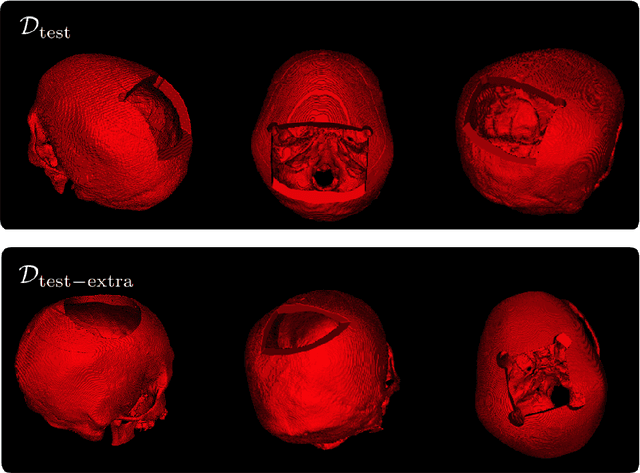

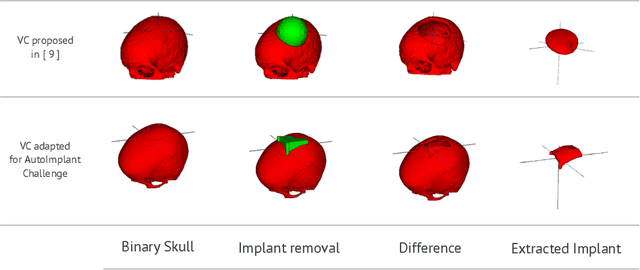
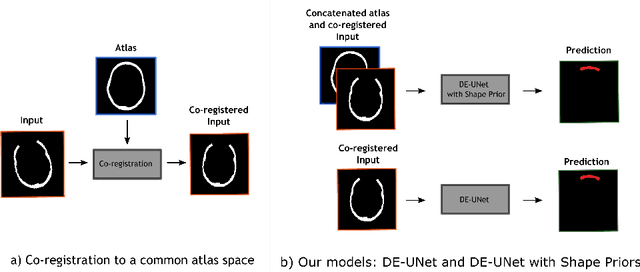
Abstract:Cranial implant design is a challenging task, whose accuracy is crucial in the context of cranioplasty procedures. This task is usually performed manually by experts using computer-assisted design software. In this work, we propose and evaluate alternative automatic deep learning models for cranial implant reconstruction from CT images. The models are trained and evaluated using the database released by the AutoImplant challenge, and compared to a baseline implemented by the organizers. We employ a simulated virtual craniectomy to train our models using complete skulls, and compare two different approaches trained with this procedure. The first one is a direct estimation method based on the UNet architecture. The second method incorporates shape priors to increase the robustness when dealing with out-of-distribution implant shapes. Our direct estimation method outperforms the baselines provided by the organizers, while the model with shape priors shows superior performance when dealing with out-of-distribution cases. Overall, our methods show promising results in the difficult task of cranial implant design.
Self-supervised Skull Reconstruction in Brain CT Images with Decompressive Craniectomy
Jul 11, 2020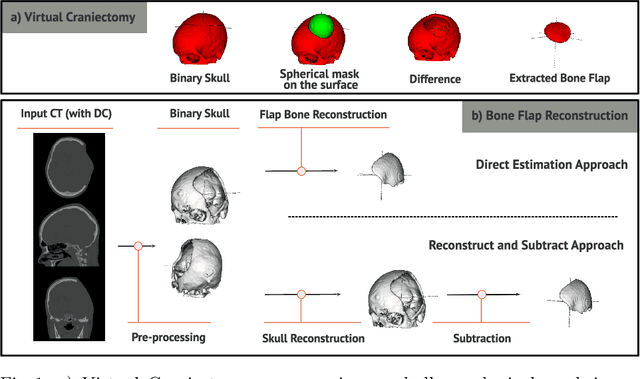
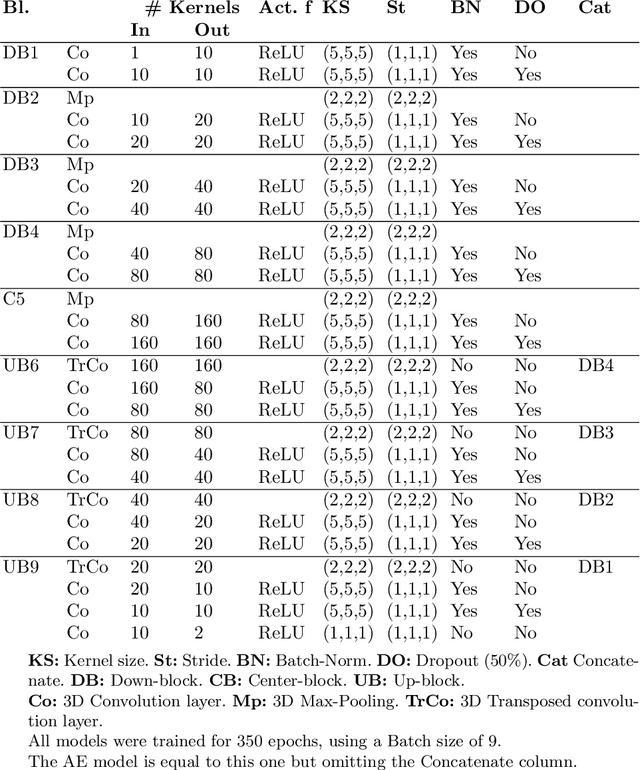
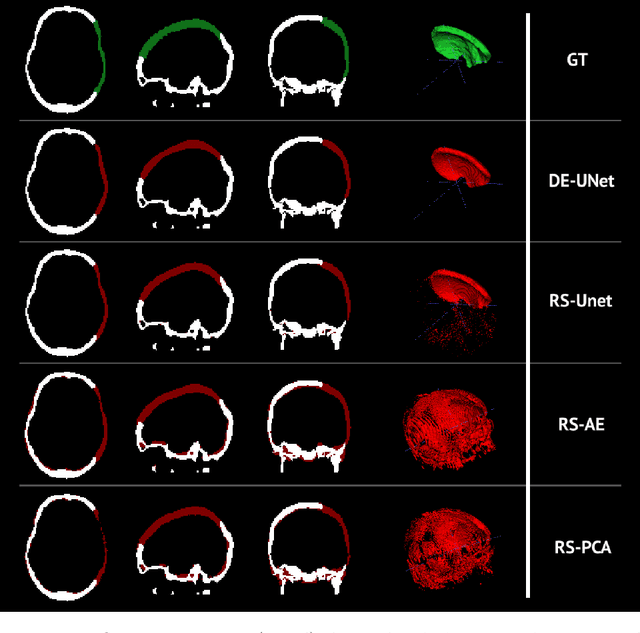
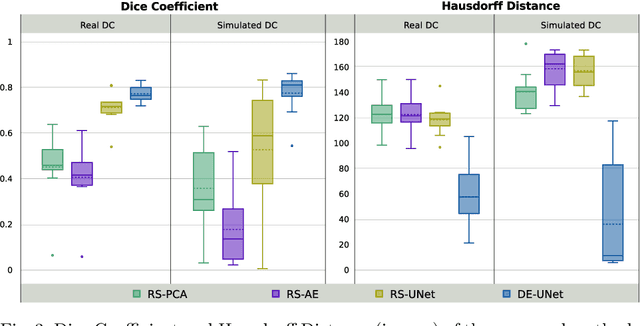
Abstract:Decompressive craniectomy (DC) is a common surgical procedure consisting of the removal of a portion of the skull that is performed after incidents such as stroke, traumatic brain injury (TBI) or other events that could result in acute subdural hemorrhage and/or increasing intracranial pressure. In these cases, CT scans are obtained to diagnose and assess injuries, or guide a certain therapy and intervention. We propose a deep learning based method to reconstruct the skull defect removed during DC performed after TBI from post-operative CT images. This reconstruction is useful in multiple scenarios, e.g. to support the creation of cranioplasty plates, accurate measurements of bone flap volume and total intracranial volume, important for studies that aim to relate later atrophy to patient outcome. We propose and compare alternative self-supervised methods where an encoder-decoder convolutional neural network (CNN) estimates the missing bone flap on post-operative CTs. The self-supervised learning strategy only requires images with complete skulls and avoids the need for annotated DC images. For evaluation, we employ real and simulated images with DC, comparing the results with other state-of-the-art approaches. The experiments show that the proposed model outperforms current manual methods, enabling reconstruction even in highly challenging cases where big skull defects have been removed during surgery.
 Add to Chrome
Add to Chrome Add to Firefox
Add to Firefox Add to Edge
Add to Edge